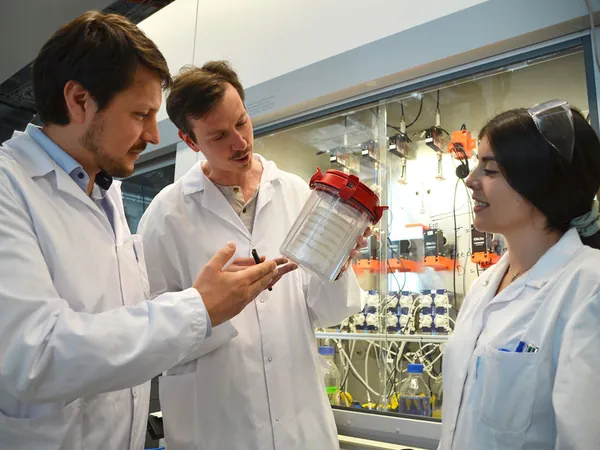
Transforming Toxicity into Energy: The Amazing Potential of T. kivui
2025-06-13
Author: Arjun
Turning Carbon Monoxide into Clean Energy!
In a groundbreaking discovery, researcher Stefan Pflügl and his team reveal how the bacterium T. kivui can be engineered to thrive on carbon monoxide (CO) as its primary energy source. This revelation, published in the journal *Nature Communications*, opens the door to innovative applications in biofuel production.
Harnessing High-Temperature Bacteria for Sustainable Solutions
T. kivui is adept at growing in elevated temperatures and converting basic molecules like carbon dioxide and hydrogen into valuable organic compounds. This unique trait positions it as a potential game changer for biomass gasification plants, allowing for the efficient transformation of synthesis gas derived from agricultural and wood waste into sustainable products.
With further genetic modifications, T. kivui can be directed to produce acetic acid, ethanol, or isopropanol—key ingredients for biofuels and chemical feedstocks—effectively contributing to a circular carbon economy.
Overcoming Toxicity: A Bacterium's Evolutionary Journey
Traditionally a toxic environment for many microorganisms, including T. kivui, carbon monoxide was once a growth inhibitor. However, Pflügl reveals that through gradual adaptation, T. kivui can now utilize CO not just as a carbon source, but as its sole source of energy, demonstrating an extraordinary evolutionary response.
Their studies have identified a transposon—a movable segment of DNA—responsible for these enhanced capabilities, showcasing how microorganisms can naturally adapt to toxic environments.
Fast-Tracking Evolution with Genetic Engineering
This finding not only enhances our understanding of microbial evolution but also illustrates how we can leverage natural mechanisms for biotechnological innovations. Utilizing CRISPR/Cas technology, known for its DNA-editing precision, Pflügl’s team has developed a novel method, Hi-TARGET, to modify T. kivui’s genetic makeup.
With Hi-TARGET, they achieved a remarkable success rate of 100%, allowing for rapid genetic alterations that were previously unimaginable. This opens vast research opportunities to explore how T. kivui can be fine-tuned for producing more complex substances using low-energy substrates like CO2, H2, and CO.
A Bright Future for Sustainable Microbial Applications
The insights gained from studying T. kivui hold the promise of transferring knowledge to other microorganisms capable of metabolizing gaseous substrates. As we strive for a more sustainable industrial landscape, the work of Pflügl and his team may very well be the key to transforming the way we view waste and energy.
Stay tuned as this story continues to unfold, paving the way for a cleaner, greener future!



 Brasil (PT)
Brasil (PT)
 Canada (EN)
Canada (EN)
 Chile (ES)
Chile (ES)
 Česko (CS)
Česko (CS)
 대한민국 (KO)
대한민국 (KO)
 España (ES)
España (ES)
 France (FR)
France (FR)
 Hong Kong (EN)
Hong Kong (EN)
 Italia (IT)
Italia (IT)
 日本 (JA)
日本 (JA)
 Magyarország (HU)
Magyarország (HU)
 Norge (NO)
Norge (NO)
 Polska (PL)
Polska (PL)
 Schweiz (DE)
Schweiz (DE)
 Singapore (EN)
Singapore (EN)
 Sverige (SV)
Sverige (SV)
 Suomi (FI)
Suomi (FI)
 Türkiye (TR)
Türkiye (TR)
 الإمارات العربية المتحدة (AR)
الإمارات العربية المتحدة (AR)